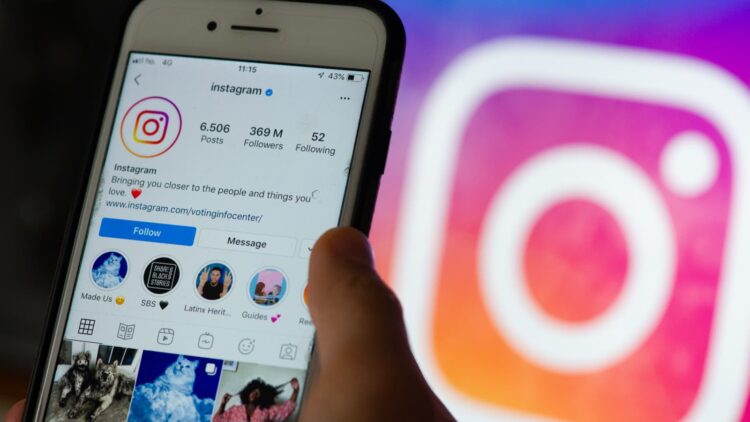By Dominic Taylor-
Instagram has began testing new age-verification tools, including new technology that claims to be able to estimate the user’s age using a video selfie. The Meta-owned platform is testing a new set of features — video selfies, vouching from adult friends, and providing an ID — designed to verify when people say they are 18 and older.
The ‘Age Estimation’ technology from digital identity company Yoti analyses the user’s facial features using artificial intelligence (AI), in order to predict their age. Instagram is also trialling a new age-verification method that involves asking three separate users to confirm how old they are.
The testing of the tools began in the US today, with the aim of providing more age-appropriate experiences..
The app will ask them to verify their age using tools in the event of people trying to edit their date of birth.
In its whitepaper about the technology, Yoti claims that the AI can just estimate your age, but can’t identify you. The firm said it has trained its model from images of users across the world who have consented for their data to be used for research.
Another new age verification tool asks the user to nominate three mutual followers over the age of 18 to confirm how old they are. Those nominated cannot be currently vouching for anyone else and and must meet ‘other safeguards we have in place’, Instagram said.
However, the aforementioned strategy is vulnerable to manipulation since close associates of many individuals would be willing to lie for their friends. One of its pitfalls, is also the fact adults over the age of 18 can potentially be bribed to provide false confirmation of their age.
The social media platform hopes that the tools will ensure teens and adults receive the right experience for their age group.
‘Understanding someone’s age online is a complex, industry-wide challenge,’ Instagram said.
‘We want to work with others in our industry, and with governments, to set clear standards for age verification online.
‘Many people, such as teens, don’t always have access to the forms of ID that make age verification clear and simple. As an industry, we have to explore novel ways to approach the dilemma of verifying someone’s age when they don’t have an ID.
The test covers U.S. users, who will now potentially see these options if they try to change their age from under 18 to 18 and over.
In the U.S, individuals changing their age from under 18 to 18 and over will be prompted to select one of the options mentioned above. You can provide an ID card like a passport or a driver’s license for verification. The company will store your ID for 30 days on its servers before deleting it.
Technology company Yoti’s ‘Age Estimation’ system uses artificial intelligence (AI) to tell if social media users are too young to use apps like Instagram or TikTok.
Instagram requires users to be over the age of 13 to sign up, and in some countries this is higher.
If they are between the ages of 13 and 17, they are assigned a private account by default – meaning other users cannot see their content or contact them unless the teen accepts them as a follower.
Users without a valid ID listed in Instagram’s acceptable ID list, can choose the video selfie method for age verification. Instagram has partnered with London-based digital identity startup Yoti for this part of the verification, so that once a user uploads the video selfie, Meta shares it with Yoti, which verifies their age using its specially trained AI. Once the verification process is over, both companies delete the data.
In its whitepaper about the technology, Yoti claims that the AI can just estimate your age, but can’t identify you. The firm said it has trained its model from images of users across the world who have consented for their data to be used for research.
The third way being considered old enough is named Social Vouching. This method involves three of your friends aged 18 and above who need to vouch for your age, and they can’t be vouching for anyone else at that moment. The company said that the voucher gets the list of six people randomly with no family member on it.
The people you choose for this process will get a confirmation request, and they’ll have to address it within three days. The people vouching for you will get options to specify your age bracket such as under 13 years old, 13-17 years old, 18-20 years old, 21 years or older, or I’m not sure. All three of them must choose the same option for your age verification to be approved.
Meta said that all the information you provide for age verification is private, and it won’t be visible to anyone. The company also noted that devices and app stores should perform these checks so teens can have a safe experience across all apps and services.
“Understanding someone’s age online is a complex, industry-wide challenge. We want to work with others in our industry, and with governments, to set clear standards for age verification online. Many people, such as teens, don’t always have access to the forms of ID that make age verification clear and simple. As an industry, we have to explore novel ways to approach the dilemma of verifying someone’s age when they don’t have an ID,” the company said in a statement.
Meta added that it’s continuously developing AI to detect users lying about their age. The AI also helps the company keep the teens away from experiences for adults like Facebook Dating and Mentorship.
Instagram first introduced an age check by asking for birthdates during registration in 2019. Later in 2021, it made it mandatory for everyone to provide their birthdate.
The same year, it launched restrictions for teens like making accounts private by default for under-16 users, blocking DMs from unknown adults, and stopping advertisers to serve targeted ads based on teens’ interests and activities. Instagram’s rival TikTok also introduced similar limitations for users under 18 last year.




